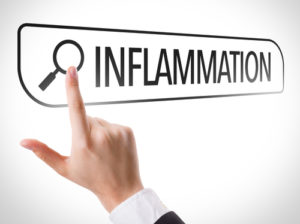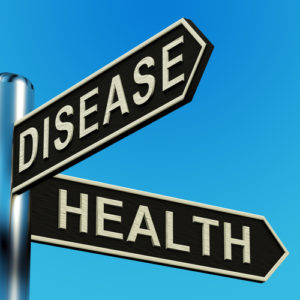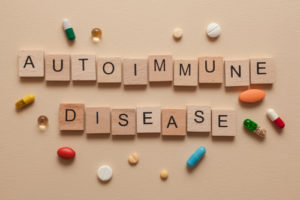Are you experiencing tingling in your toes and fingers? How about weakness in the arms and legs? Do you find yourself complaining about  extreme fatigue or loss of sensation? These are some of the most common symptoms of Chronic Inflammatory Demyelinating Polyneuropathy (CIDP) and CIDP IVIG treatment can help.
extreme fatigue or loss of sensation? These are some of the most common symptoms of Chronic Inflammatory Demyelinating Polyneuropathy (CIDP) and CIDP IVIG treatment can help.
CIDP is a rare autoimmune and neurological disorder that attacks the nerves. In the United States, about 40,000 people are believed to have the condition, but it is hard to pin down an exact number.
What is CIDP?
Also called chronic relapsing polyneuropathy, the disorder is often caused by damage to the peripheral nerves (the nerves surrounding the outside of the brain) and the spinal cord. CIDP causes the immune system to attack the nerve covering, which is called myelin, causing nerve damage.
Some of the symptoms of the disease include a tingling sensation or numbness that typically starts in the toes and fingers. CIDP patients also experience progressive weakness, fatigue, and loss of sensation.
In the early stages of the disorder, patients usually complain of difficulties in accomplishing minor tasks such as climbing stairs or using a blow dryer. It typically takes about eight weeks for symptoms to develop fully.
Experts consider CIDP to be the chronic form of Guillain-Barre syndrome (GBS). GBS is also an autoimmune disorder that attacks the nerves. The main difference between the two is the speed of progression of symptoms. CIDP develops slowly, while GBS is considered a neurological emergency.
At this point, there is no definitive diagnostic test for CIDP. Medical experts use a combination of patient history, neurological examinations, and other tests such as cerebrospinal fluid (CSF) analysis and complete blood count (CBC). Sometimes, a nerve biopsy is also required.
Risk Factors for CIDP
So far, medical experts haven’t been able to pin down exactly why the disorder strikes some people and not others. Anyone can develop CIDP regardless of age or gender, but it is more common in older adults and tends to affect men more than women. The typical age of onset is 30-60 years old. Having a previous infection also seems to be a risk factor that increases the chances of acquiring the condition.
CIDP IVIG Treatment Plan
If left untreated, CIDP can lead to the progressive loss of strength and sensation. Fortunately, even though the disorder is chronic, it is treatable. In fact, most patients respond very well to treatment. The most important thing is to diagnose the disease as early as possible, which increases the chances of better patient function and overall quality of life.
During treatment, the immediate goal is to control and suppress the symptoms of the disease such as pain, weakness, and sensory loss.
There are several standard treatments known to work for CIDP patients. For the last two decades, intravenous immunoglobulin (IVIG) therapy has been considered the primary treatment option.
Intravenous immunoglobulin (IVIG) is the general term used to refer to replacement therapy. According to a recent study, as much as 50-70% of patients have a positive response to this treatment. In a nutshell, with IVIG, the patient receives injections of antibodies from carefully screened human blood donors. Patients who receive IVIG often show signs of improvement in strength, functional ability and quality of life.
IVIG is proven by medical experts to be safe. It is often given as an outpatient procedure. For most patients, the standard dosage is 2g/kg given intravenously over 2–5 days. The dosage is then usually reduced to by 1g/kg for one day about every three weeks.
With IVIG, improvement can be seen just days after treatment. Some patients may experience side effects such as chills, muscle ache, fever, or rapid heartbeat. In most cases, however, these side effects can be avoided by slowing down the infusion rate.
Other Common CIDP Treatments
Other treatments known to work are plasma exchange therapy and the corticosteroids such as Prednisone.
In plasma exchange therapy, plasma is filtered from the blood and replaced with new fluid. It is often done with a tube or catheter inserted into a vein in the neck. At the start of the treatment, it is typically done five times during a ten-day period. Beneficial effects can last from four to twelve weeks.
Prednisone is a steroid often used to suppress the immune system. It is typically used for diseases such as asthma, Crohn’s disease, allergies, systemic lupus and more. CIDP patients can take Prednisone to help improve muscle strength and coordination, as well as to help strengthen nerve signals. Patients who opt to use Prednisone can expect to see results in five to eight weeks, but intake should continue for at least a year to achieve long-term effects.
If you have questions about CIDP or IVIG treatment for CIDP, you should speak with your doctor.
 characterized by red rashes on the hands, feet, and body in children under the age of five. If left untreated, it can lead to dangerous heart conditions and, in the worst case scenario, myocardial infarction.
characterized by red rashes on the hands, feet, and body in children under the age of five. If left untreated, it can lead to dangerous heart conditions and, in the worst case scenario, myocardial infarction.
